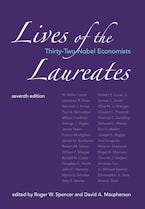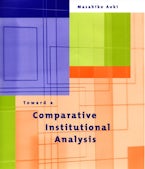The last two decades have been marked by an increasing concern with economic growth. Why do some countries grow faster than others? How can a country accelerate its economic growth? What are the effects of accelerated growth on the distribution of income? These are questions that economists have repeatedly been asked.
The modern theory of economic growth has attempted to analyze the basic structure of the processes of economic growth. The lack of empirical information about many of the crucial aspects of growth models has led to a proliferation of assumptions as well as to a number of disputes that will be settled only when further empirical evidence becomes available. At the same time, however, growth theory has provided a conceptual framework within which much more meaningful empirical research can take place, and it has accordingly generated a vast amount of econometric research. While this volume is not concerned with the empirical aspects of the problem, the discussions reprinted here should point up the areas in which empirical research is badly needed. In addition, this collection of seminal papers will serve as a measure of the advances in growth theory itself over the past several decades.
In Part I of this volume, the basic growth models of Harrod, Domar, Tobin, Solow, and Swan are presented. Most of the other articles in this book may be considered, in one way or another, as commentary on these basic papers. Part II focuses on the production function—in particular on the relationship among growth, capital, and technical change. Part III includes representatives of the Cambridge Growth and Distribution Theory. These differ from the neoclassical model presented earlier in several crucial ways, which the editors discuss in detail in their introduction to this section. Like Part II, Part IV is concerned with the nature of the production process. The focus here, however, is on the different production functions for the consumption and investment goods sectors.
The last section of the book, Part V, differs from the earlier sections in one important respect: in the previous sections, the consumption function is specified as a behavioral rule. The central problem of this section, on the other hand, is how income should be allocated between investment and consumption. This serves, in a way, as a bridge between growth theory and planning. We are brought into the realm of welfare economics, of normative versus positive or descriptive economics.
Some of the most notable of contemporary economists are represented in the volume.
Contributors
R. F. Harrod, Evsey D. Domar, James Tobin, R. M. Solow, T. W. Swan, J. R. Hicks, Joan Robinson, Hirofumi Uzawa, Wiliiam Fellner, Charles Kennedy, Edmund S. Phelps, R. C. O. Matthews, M. E. Yaari, Edward F. Denison, Kenneth J. Arrow, Leif Johansen, D. G. Champernowne, Lord Kahn, Nicholas Kaldor, James A. Mirrlees, F. P Ramsey, Paul A. Samuelson, and E. Malinvaud











